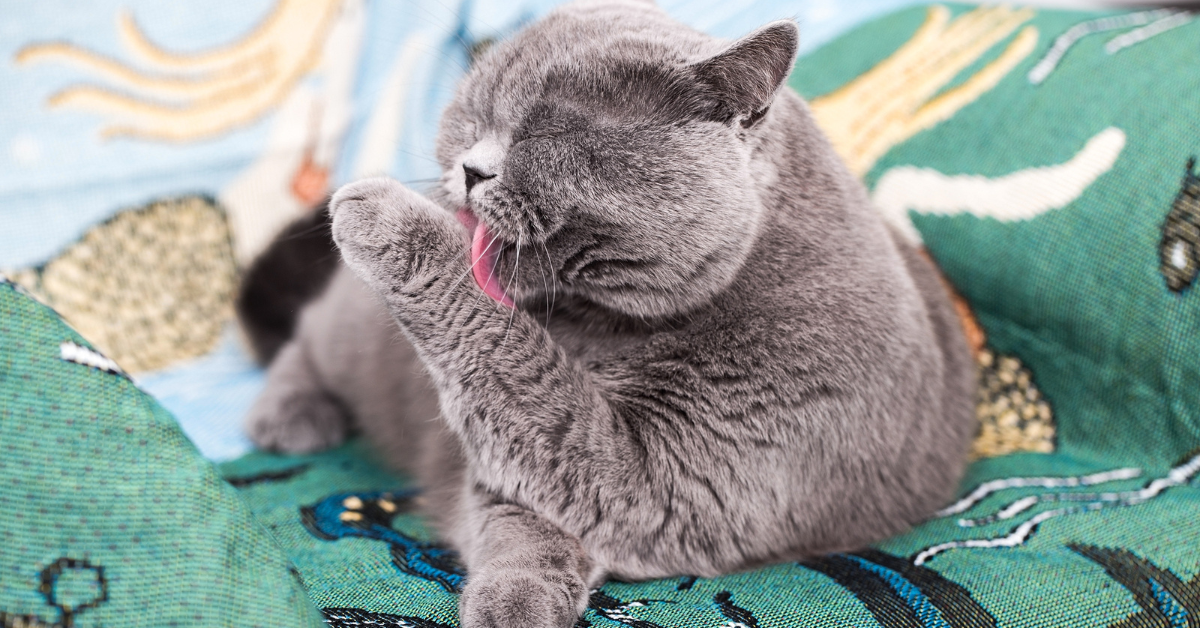Best Pet Insurance in 2024
Choosing the best pet insurance in 2024 is essential for pet owners who view their furry, feathered, or scaled companions not just as pets but as family members. The importance of pet insurance has been recognized since 1982 when Veterinary Pet Insurance (VPI) issued the first veterinary insurance policy in the United States for the dog that played Lassie on TV. Opting for the right pet insurance policy can protect against unexpected veterinary expenses, ensuring your pet receives the best care possible without straining your finances.
In recent years, the pet insurance industry has evolved. This offers a range of plans that cover everything from routine check-ups and vaccinations to emergency treatments and chronic conditions. With an array of options available, it's essential to compare plans based on coverage, deductibles, premiums, and exclusions to find the best fit for your pet's needs and budget.
According to a Global Market Insights, Inc. research report, the global pet insurance market is projected to grow significantly and exceed $10 billion by 2025. This marks a considerable expansion in the pet insurance industry, indicating its increasing popularity and the growing recognition of the importance of securing health insurance for pets.
This guide will explain the basics of pet insurance, helping you make an informed decision about protecting your beloved pet's health and well-being in 2024.
Understanding Pet Insurance Plan Structures
Understanding your pet insurance plan structure is vital to guarantee the best coverage for your pet. Pet insurance plans come in various forms, including comprehensive coverage, accident-only policies, and wellness coverage.
Comprehensive Coverage
Comprehensive pet insurance, or accident and illness coverage, is a broad-spectrum plan. It covers accidents, medical conditions, and breed-specific issues. However, the extensive protection comes with a higher premium cost.
Accident-only Policies
On the other hand, accident-only insurance focuses on sudden, unforeseen incidents like injuries and accidents. It covers treatments, surgeries, and diagnostic tests required due to these events and is more affordable than comprehensive coverage.
Wellness Coverage
Wellness and preventive care coverages are typically additional options that reimburse for routine care. They cover wellness exams, vaccinations, and flea prevention, helping to maintain your pet’s overall health. Understanding these different plan structures will help you choose the right pet insurance policy based on your pet’s needs and budget.
Evaluating the Best Pet Insurance Companies of 2024

Choosing the right insurance for your beloved pet involves scouring through various pet insurance companies, each offering varied coverage options, benefits, and customizations. NerdWallet highlights several top pet insurance companies with their own specializations:
- ASPCA: Offers broad coverage and is notable for covering horses in addition to cats and dogs.
- Embrace: Praised for its many ways to save and high reimbursement limits.
- Figo: Known as the best pet insurance specifically for cats.
- MetLife: Recommended for dogs, offering comprehensive plans tailored to canine needs.
- Nationwide: It stands out for covering exotic pets, which is a rare offering in the industry.
- Pets Best: Recognized for its flexible plans, including optional wellness and accident-only coverage.
- Spot: Offers straightforward waiting periods, making it easier for pet owners to understand when their coverage starts.
But the best pet insurance companies aren’t just about diverse coverage options. They are also about customer satisfaction. Companies like Pets Best have made their mark by offering direct vet payment options, while others have set themselves apart with diverse contact options and efficient claim processing.
Therefore, considering not just coverage and costs but also customer service and efficiency of insurance processing is critical when evaluating pet insurance companies. After all, the best pet insurance company is the one that offers comprehensive coverage, fits within your budget, and provides excellent customer service.
Impact of Your Pet's Age on Insurance Premiums
Your pet's age is a critical factor that impacts pet insurance premiums. As pets age, they are more likely to develop illnesses or age-related injuries, which leads to higher insurance premiums. Pet insurance providers impose different age restrictions for enrollment. For instance, Nationwide has a minimum age of 8 weeks and a maximum age of up to 8 or 9 years, while others have no age limit.
The cost difference can be startling. Premium costs for an 8-week-old dog might be approximately $57 a month, but the same policy for a 10-year-old dog could escalate to around $160 monthly. Furthermore, a pet’s medical history, including incidents like chronic illnesses or major injuries, particularly for older pets, can raise the cost of insurance rates.
Therefore, pet owners must consider their pet’s age and health status when planning pet insurance. The younger your pet, the more you stand to benefit from lower premiums. It’s always better to insure your pet early to save money and ensure comprehensive coverage for your furry friend.
Coverage Limits for Pet Insurance: Annual vs. Unlimited Options
Understanding coverage limits is imperative when dealing with pet insurance. Pet insurance coverage options are typically categorized into annual coverage limits or unlimited annual coverage, each with significant implications for comprehensive protection.
Annual coverage limits can start as low as $2,500 and extend beyond $15,000. Some plans also have a per-condition limit within the policy year. On the other hand, unlimited annual coverage options provided by insurers such as Healthy Paws and Nationwide ensure no cap on the amount paid out for covered veterinary costs. These are particularly beneficial for pets with chronic illnesses or breeds prone to hereditary conditions.
While unlimited pet insurance plans typically have higher monthly premiums, they offer peace of mind by preventing significant out-of-pocket expenses. However, pet owners cannot usually increase their coverage limits mid-term after a costly condition has been diagnosed.
So, when choosing between annual and unlimited coverage options, consider your pet’s health condition, breed, and financial situation to make the right decision.
Pet Insurance Exclusions: What's Not Covered?

Pet insurance, like any insurance policy, comes with its own exclusions. It’s important to be aware of these exclusions before purchasing a policy. You need to understand what’s not covered to avoid any surprises down the line. Pet insurance policies often exclude coverage for certain diseases or conditions, which may include:
- Pre-existing Conditions: Most pet insurance companies will not cover conditions present or diagnosed before the policy's start date. This can include chronic illnesses, previous injuries, or any health issues that showed symptoms before you purchased the insurance.
- Routine and Preventative Care: Basic care such as vaccinations, flea and tick prevention, heartworm medication, spaying/neutering, and dental cleaning are often not included in standard pet insurance plans. However, some companies offer wellness or preventative care add-ons for an additional cost.
- Hereditary and Congenital Conditions: Some insurers may exclude hereditary conditions (diseases or disorders inherited genetically) and congenital conditions (issues present at birth) unless you choose a more comprehensive plan that includes such coverage.
- Behavioral Issues: Treatments for behavioral issues like anxiety or aggression might not be covered by standard pet insurance policies, and coverage for behavioral therapy can vary significantly between insurers.
- Cosmetic Procedures: Procedures deemed non-medical or purely cosmetic, such as tail docking, ear cropping, or declawing (except for medical necessity), are typically not covered.
Wellness Coverage: Is It Worth the Extra Cost?
You may have heard of wellness coverage as an add-on to your pet insurance policy. But is it worth the extra cost? Wellness plans can benefit different life stages, such as vaccinations for puppies and kittens or regular health checks for older pets.
Wellness plans typically cover regular veterinary services, including:
- Routine exams
- Vaccinations
- Flea
- Tick
- Heartworm preventative
- Blood work and dental care
Additional perks of wellness plans may include spay/neuter procedures, microchipping, and specific health screenings prescribed to prevent common diseases. However, aside from the range of benefits, pet owners need to calculate whether the probable payout of their wellness plan exceeds its annual cost, which could signify actual savings.
Therefore, pet owners are advised to thoroughly analyze wellness plan offerings, comparing them to their pet’s specific health needs and the potential financial benefits. It’s important to weigh the benefits against the additional cost to assess whether wellness coverage leads to savings and suits your pet’s healthcare needs.
Selecting the Right Pet Insurance for Your Dog's Lifestyle

Choosing the right pet insurance for your dog involves several steps and considerations to ensure you select a plan that best fits your dog's lifestyle and financial situation. Here are some key steps and factors to consider:
1. Evaluate Your Dog's Needs
- Breed-Specific Conditions: Some breeds are prone to certain health conditions. Research your dog’s breed to understand potential health risks.
- Lifestyle: Consider whether your dog is an adventurous outdoor companion, which might increase the risk of injuries, or a homebody, which could influence the types of coverage you prioritize.
- Age: Older dogs typically require more medical care than younger ones. However, getting insurance when your dog is young can help avoid issues with pre-existing condition exclusions.
2. Understand the Types of Coverage
- Accident-Only Plans: These plans cover treatment and care for accidents, such as injuries from falls or car accidents, but not illnesses.
- Comprehensive Plans: These plans cover both accidents and illnesses and can include treatments, surgeries, diagnostic tests, and medications.
- Wellness Plans: While not insurance per se, wellness plans cover preventative care costs such as vaccinations, flea and tick prevention, and routine check-ups. These can be added to comprehensive plans.
3. Consider the Financial Details
- Premiums: The monthly or annual cost can vary widely based on coverage level, deductible, and your dog’s age and breed.
- Deductibles: The amount you must pay out of pocket before insurance kicks in. Lower deductibles typically mean higher premiums.
- Reimbursement Levels: The percentage of the vet bill the insurance company will pay after the deductible is met. Higher reimbursement levels lead to higher premiums.
- Coverage Limits: Annual or lifetime limits on how much the insurance company will pay.
4. Look for Exclusions and Limitations
- Pre-existing Conditions: Most plans do not cover pre-existing conditions, so understand how each plan defines this term.
- Breed-Specific Exclusions: Some plans exclude certain breeds or breed-specific conditions.
- Waiting Periods: Most plans have a waiting period from when you sign up until coverage begins, particularly for illnesses.
5. Read Reviews and Ask for Recommendations
- Check out reviews and ratings of pet insurance companies online.
- Talk to your vet about their experiences with different pet insurance plans and what they recommend.
- Ask fellow dog owners about their experiences with pet insurance.
Value of Comprehensive Pet Care Through Insurance
Finding the best pet insurance company in 2024 can significantly alleviate financial stress when covering vet costs, making pet insurance worth considering for pet owners. Unlike human health insurance policies, most pet insurance plans offer flexibility in coverage, allowing owners to tailor policies to their pets' specific needs.
When evaluating whether buying pet insurance is a good decision, comparing pet insurance costs across different providers is crucial. Ultimately, investing in a pet insurance plan can provide peace of mind by ensuring that your furry friend receives the care they need without the burden of unexpected medical expenses.
Just as pet insurance's worth is measured by its ability to cover significant medical expenses, investing in high-quality pet products from reputable companies like Petmate also represents a commitment to your pet's overall well-being and happiness. Petmate can ensure your pet enjoys a well-rounded, healthy, and joyful life, so investing in insurance and pet products is wise.
Previous article

Next article

Related posts
View all-

5 Simple Tips to Make Sure Your Cat Drinks Enough Water
Ensuring your cat stays hydrated is important, but it can be challenging since many cats don't drink enough water. Dehydration can lead to kidney disease and other health issues. Fortunately, you can encourage your cat to drink more with a few simple changes. Read Article -

How to Keep Your Cat Busy at Night (So You Can Sleep)
For many cat owners, the quest for a good night's sleep while keeping their feline friends content and engaged can seem like a never-ending battle. Cats, naturally more active at night or early in the morning, often disrupt your sleep schedules with nocturnal activity, whether through playful nature or seeking attention. Read Article -

Should You Bathe Your Cat? Everything You Need to Know About Cat Hygiene
When it comes to cat hygiene, a common question among cat owners is, "Should you bathe your cat?" Understanding how to care for felines, especially bathing cats properly, is crucial for maintaining their overall health. Most cats are fastidious groomers, but specific scenarios like long-haired cats getting dirty or skin irritations, might require a bath.
Read Article -

How to Fly with a Large Dog: Tips and Tricks
Traveling can be challenging, especially when it involves flying with a large dog. Whether your furry friend is a service dog, therapy dog, or simply a beloved pet, understanding the guidelines set by most airlines is crucial. Read Article




